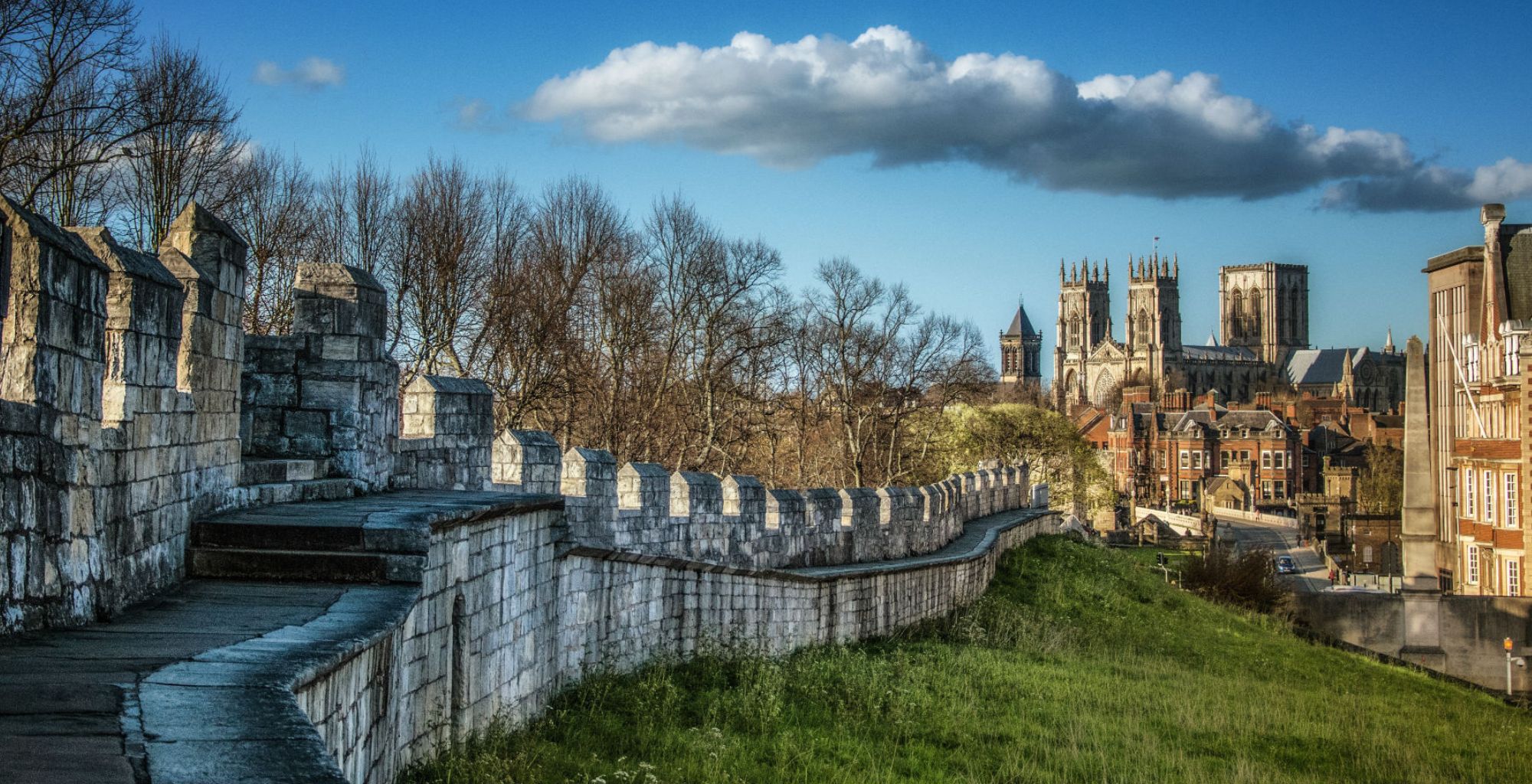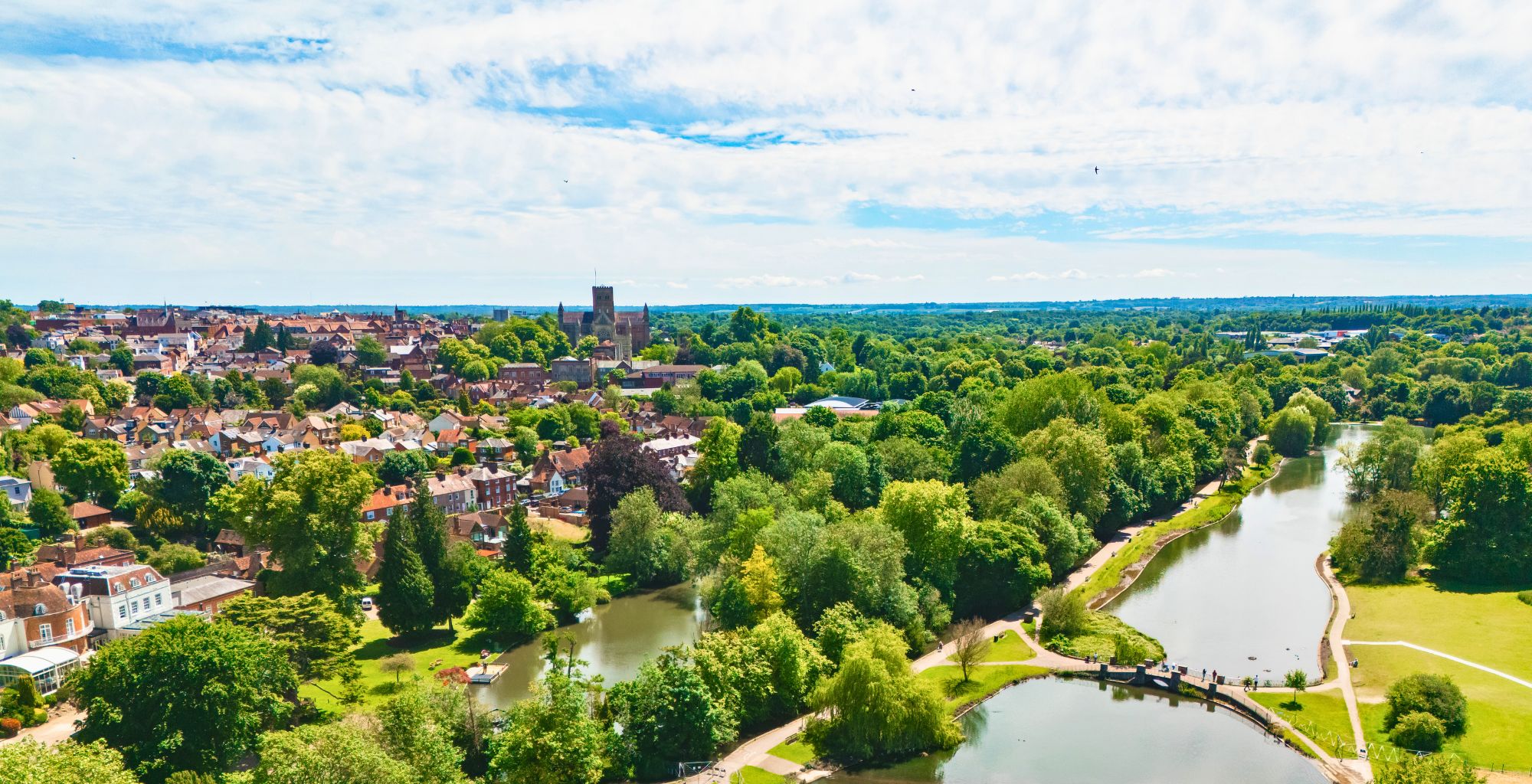Are you looking for a place to live that offers around a 30 minute commute to London? Whether you...

Best places to live in Cheshire
Are you considering a move to the North West and want to know where the best places to live in Cheshire are?
The North West region of England has seen its popularity soar in recent years, and Cheshire is perhaps one of the most cosmopolitan counties in the region.
Offering peaceful countryside living and beautiful waterways, the county also has Chester’s lively cathedral city, with its university, and some buzzy towns offering fantastic shopping and nightlife.
Home to the famous Cheshire Golden Triangle, an area known for its highly desirable towns and villages, Cheshire is noted for its large homes, the lifestyle on offer, and the many notable residents who live there.
Here are some of the best places to live in Cheshire for you to consider.

Bollington
For those seeking the tranquillity of rural life coupled with the vibrancy of a close-knit community, Bollington is an outstanding choice. The town’s picturesque setting among the rolling hills of the Peak District contributes to it being considered one of the best places to live in Cheshire.
Bollington’s historical architecture, canal paths, and scenic walking routes give it its idyllic character.
The town hosts various local festivals, markets, and cultural events that bring residents together. There are several primary schools in the area to nurture young minds, and secondary education options are available in nearby towns.
The town’s transport framework is well-suited for its size, with convenient road access to the surrounding Cheshire region and beyond.
While Bollington is not directly connected by a motorway, it is situated close to the A523, providing a direct route to the larger Macclesfield and Stockport areas, and onwards to the extensive motorway network of the North West.
Nearby Macclesfield offers regular train services to Manchester, London, and other major cities, making it a viable commuting town for professionals.

Poynton
The desirable town of Poynton stands out as one of the best places to live in Cheshire, especially for families and professionals working in Manchester or seeking a high-quality living environment within Cheshire.
It is home to several primary schools offering a strong foundation in various educational disciplines. Secondary education is similarly comprehensive, with schools that are recognised for delivering high-quality education, including the reputable Poynton High School.
Poynton is situated approximately 15 miles from Manchester and around 6 miles from Manchester Airport, with connectivity to major motorways such as the M56 and M6.
Served by Poynton Railway Station on the Manchester Piccadilly to Stoke-on-Trent line, residents benefit from direct and convenient access to larger cities for work or leisure, with Manchester being a mere 20 minutes or so journey by train.
Wilmslow
Together with Alderley Edge and Prestbury, Wilmslow forms a point of Cheshire’s “Golden Triangle,” an area considered one of the best places to live in Cheshire with some of the county’s most sought-after addresses.
The town lies outside the boundaries of the Greater Manchester conurbation, yet is still only around 14 miles from the city centre. If you work in Manchester, the commute is easy and straightforward, with plenty of excellent schools in the neighbourhood.
These include several primary and secondary schools. Notable examples in the area include Wilmslow High School and Alderley Edge School for Girls, both recognised for their academic excellence, and The King’s School, a highly regarded, co-educational, independent school founded in 1502.
Wilmslow is in the countryside, approximately 9 miles equidistant between Stockport and Macclesfield. It is around 4 miles from Manchester Airport, giving access to the M56 motorway towards a junction with the North-South M6 motorway and on to North Wales.
Wilmslow station is on the main Crewe to Manchester line, with the journey to Manchester Piccadilly taking approximately half an hour.

Prestbury
The village of Prestbury sits on the banks of the River Bollin as it flows down from the Pennines and is an ancient settlement dating back to at least the Anglo-Saxons.
Prestbury is not only close to the conurbations of Manchester and Liverpool, but also to the Peak District National Park and the towns and cities to the East of the Pennines.
The Prestbury CofE Primary School is highly regarded. Nearby is The Fallibroome Academy, a secondary-level public sector Academy and the independent King’s School.
Prestbury is around 5 miles from Alderley Edge and approximately 3 miles from Macclesfield. It lies in the foothills of the Pennines, offering a picturesque setting while maintaining good transport links.
The village is also within easy reach of the M56 motorway (connecting to Manchester Airport) and the M6, which provides routes north to Liverpool and south towards London. Mainline rail services from Prestbury station run to Stoke-on-Trent, Macclesfield, and Manchester Piccadilly.
Alderley Edge

Alderley Edge is so-called thanks to the dramatic sandstone escarpment of the same name. It is the site of the oldest known metal-mining area in England, with the earliest such activities recorded in 1900 BC.
The natural features of the escarpment are today managed by the National Trust, which preserves the essentially rural aspect that makes the small community of Alderley Edge one of the best places to live in Cheshire.
There are well-regarded primary schools in the Alderley Edge catchment area. Alderley Edge School for Girls is a notable independent school in the village, and the local public sector secondary school is Wilmslow High School.
The village is especially well connected to the North West in general and the rest of the country, thanks to its links by road, rail, and air. It is roughly 6 miles equidistant from Macclesfield and Manchester Airport. Alderley Edge is on the mainline between Crewe and Manchester Piccadilly.
Macclesfield
The market town of Macclesfield offers both country living and city-centre working, with Manchester less than half an hour’s train ride away.
Macclesfield enjoys the Peak District’s scenic beauty immediately to the East and the whole of the Cheshire Plain to the West.
Together with its bustling historic streets lined with independent shops, cafes, and restaurants, and outstanding schools nearby, it is little wonder that Macclesfield is considered one of the best places to live in Cheshire.
There are numerous primary and secondary schools in the area, and Macclesfield is known for key establishments like Tytherington School, All Hallows Catholic College, The Fallibroome Academy, and the King’s School, which has been re-sited to the outskirts of nearby Prestbury. These are all highly regarded for their strong academic programmes.
Macclesfield is on the Peak District National Park’s western edge, thus strategically situated for transport links both East and West of the Pennines. To the northwest of Macclesfield lies Altrincham, with access to the M56 motorway, providing road links towards Manchester, Liverpool, and the North West region. To the southeast is Buxton, situated in the Peak District National Park.
Trains from Macclesfield run to Manchester Piccadilly to the North and Stoke-on-Trent and Birmingham to the South. Services to Manchester take less than half an hour.

Lymm
The village of Lymm is renowned for its historic features, such as Lymm Dam, and beautiful walking trails along the Bridgewater Canal.
The combination of Lymm’s natural beauty, its community events, and its connectivity renders it a prime example of one of the best places to live in Cheshire.
Lymm is equipped with a selection of primary schools, nurturing pupils from ages 4-11 with a commitment to high educational standards. Secondary schooling is equally commendable, with Lymm High School being a notable institution.
Approximately 15 miles southwest of Manchester, it is a viable and attractive location for those commuting to the city. Additionally, Lymm’s location near the M6 and M56 motorways facilitates straightforward travel to both the North and South of England and towards North Wales.
Nearby Altrincham and Warrington provide rail links that connect residents to the national network.
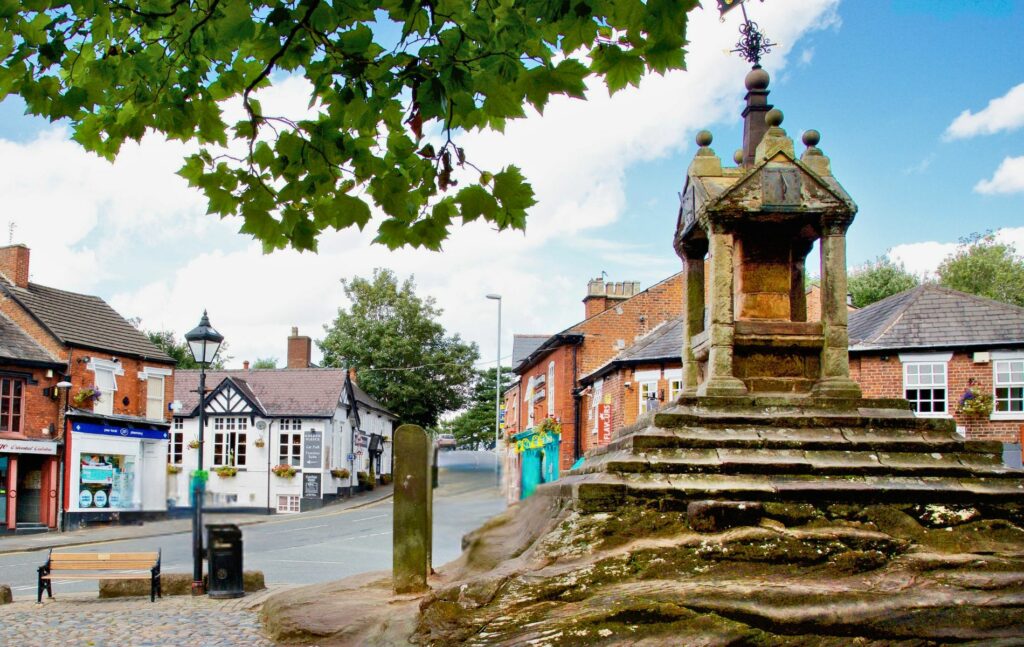
Frodsham
The picturesque market town of Frodsham sits at the edge of the Cheshire Plain, with the sandstone ridge of Frodsham Hill offering sweeping views across the Mersey Estuary.
Frodsham’s location provides a rural setting while remaining highly accessible to larger urban centres such as Chester, Warrington, and Liverpool.
The town centre features a range of independent shops, cafes, and traditional markets. Frodsham is popular with families, with a selection of well-regarded schools including Frodsham Manor House Primary School and Helsby High School nearby.
The M56 motorway is close by, providing easy road access across the North West, and Frodsham railway station offers direct services to Manchester and Chester.
Frodsham is among the best places to live in Cheshire for those who enjoy outdoor pursuits, ideally placed, with the nearby Delamere Forest and Sandstone Trail.
Chester
Chester continues to be one of the best places to live in Cheshire. Dating back to at least the Roman era, when it went by the name Deva Victrix, today the walled cathedral city is the second most populated location in Cheshire, after Warrington, and serves as the county’s administrative centre.
The city boasts a comprehensive education system with a variety of primary and secondary schools and is distinguished by independent institutions such as The Queen’s School and The King’s School, Chester, both renowned for their academic standards and educational quality.
Three miles from the centre of the city, is Christleton High School, a public sector secondary school with some 1,300 students. Chester University has several campuses in the area offering a wide range of study options.
The M56 motorway is just a few miles from the city, providing routes north east towards Manchester and east towards the M6, while also connecting westwards into North Wales. The M53 motorway begins in Chester and runs north to the Wirral and towards Liverpool.
Chester is especially well served by rail services, with trains to Liverpool, Manchester Piccadilly, Crewe, Holyhead, and Wolverhampton.

Knutsford
Thanks to its excellent regional and national road links, local schools’ quality and academic performance, and its easy access to the Cheshire countryside, Knutsford is deservedly considered one of the best places to live in Cheshire.
The town offers a solid educational framework, being home to a selection of primary and secondary schools. Knutsford Academy and Cheshire Studio School stand out as key institutions, and the leading co-educational independent Cransley School is around 8 miles away near Northwich.
Despite Knutsford’s rural location, it is only a mile or two from the arterial M6 motorway, which goes South to the Midlands and North to the Scottish border. Its road transport links in the North West of England and nationally are excellent.
From the mainline railway station at Knutsford, there are frequent services to Manchester Piccadilly (around 45 minutes away), Chester, Stockport, Altrincham, and Northwich.
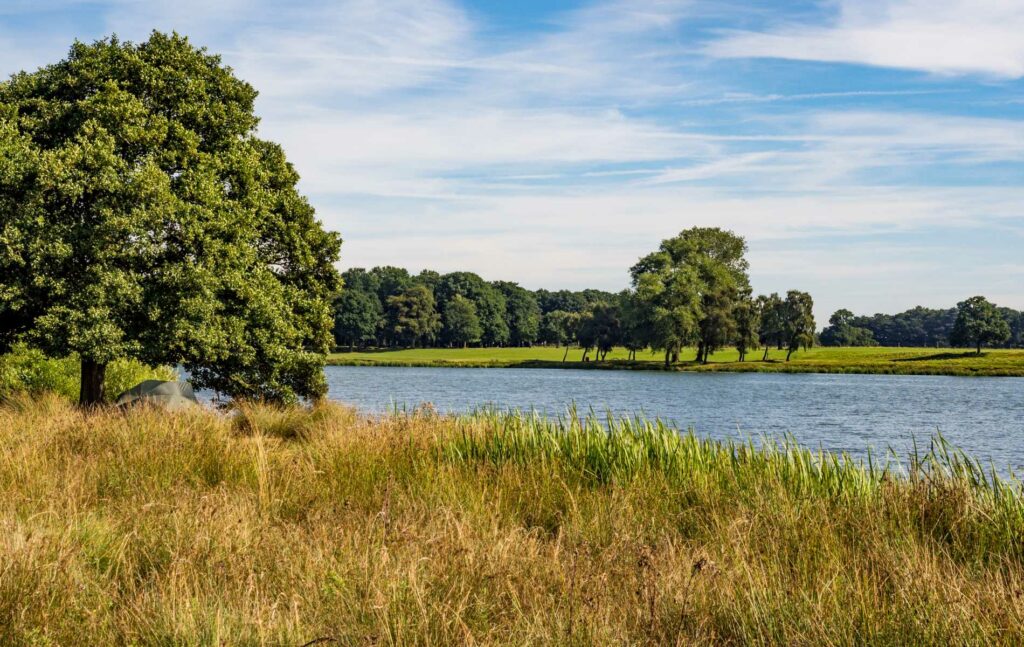
Nantwich
On the southern edge of the Cheshire plain, Nantwich is said to be one of the earliest settlements in the UK, dating back to at least Roman times, with industries based first on salt and then on tanning.
Nantwich is an attractive town, replete with many fine, historic buildings, and continues to occupy a strategically important stopover en route from London to Chester.
In the town, Acton Church of England Primary Academy and Stapeley Broad Lane Church of England Primary School are highly regarded. For secondary education, notable institutions include Brine Leas School and Malbank School and Sixth Form College.
Nantwich is roughly 20 miles equidistant from Chester and Stoke-on-Trent. Immediately before arriving in Stoke is the junction with the important North-South M6 motorway.
Nantwich railway station is on the mainline between Crewe and Shrewsbury, with services to Manchester Piccadilly and Cardiff Central. Manchester is a journey of about one hour.
Best places to live in Cheshire: Hidden Gems
Some of the best places to live in Cheshire are the county’s hidden gems, of which there are many. Here are a few examples of small towns and idyllic villages that are wonderful places to live.

Mobberley
Mobberley is mentioned in the Domesday Book of 1086 by the name of “Motburlege”, so it has a long history. The small but active village is surrounded by farmland with lots of green fields and wonderful walks.
Mobberley Church of England Primary School is highly regarded. In nearby Altrincham, Saint Ambrose College is a selective, public-sector Roman Catholic grammar school for boys. Altrincham is also home to Altrincham Grammar School for Girls and Altrincham Grammar School for Boys, both high-quality educational establishments.
Mobberley is roughly 4 miles equidistant from Knutsford and Alderley Edge, with easy access to the M56 and M6 motorways and its own railway station providing services to Manchester Piccadilly.
Tarporley
Tarporley is a large village that epitomises relaxed countryside living in this part of the country. Earning its reputation as one of the best places to live in Cheshire, it exudes an easy familiarity and sense of community supported by a café culture, high-end boutiques, and fine dining restaurants.
However, from the comfort of your rural idyll, the county town of Chester is close by, and there are excellent transport links to the major urban conurbations of Liverpool and Manchester.
The village is home to Tarporley High School and Sixth Form College. The independent Queen’s School, in Chester, is around 11 miles away and is highly regarded, catering to girls aged 4 to 18.
Tarporley is in the heart of the Cheshire countryside, approximately 11 miles equidistant from Northwich and Chester. Chester provides access to the M56 motorway. A little outside Northwich, there is the North-South M6 motorway. The nearest railway station is at Delamere, around 5 miles away.

Tattenhall
The peaceful village of Tattenhall, located in a tranquil part of Cheshire, has probably more than its fair share of historic buildings and is deservedly considered among the best places to live in Cheshire.
What you probably didn’t expect in a rural location in the middle of the countryside is a marina.
Tattenhall Marina offers cruising on the inland waterways of the Four Counties Ring, which takes in many picturesque sights of the North West.
Tattenhall Park Primary School is well-regarded. Around 6 miles away on Chester’s outskirts is the popular public sector secondary school and sixth-form Christleton High School. Also, on the outskirts of Chester is the leading independent King’s School.
Tattenhall is around a 9-mile drive from the City of Chester and around 13 miles from Wrexham. Access to the main North-South M6 motorway is just beyond Crewe – some 19 miles to the east.
The nearest mainline station is also in Chester, which offers frequent services to Liverpool (Lime Street and Central), Manchester Piccadilly, Crewe, Holyhead, and Wolverhampton.
Malpas
Malpas is situated in southwest Cheshire, near the North Wales border and close to Shropshire, offering a unique position between the two regions. Described as having a thriving community, this market town has many independent shops, local services, voluntary sector organisations, and community groups.
Although predominantly rural, it has excellent road and rail connections to North Wales, the North West, and the English Borders. Schools include Malpas Alport Endowed Primary School and the secondary modern comprehensive Bishop Heber High School.
Malpas is approximately 12 miles from Wrexham to the west and 14 miles from Nantwich to the east. Travelling north via Chester provides access to the M53 motorway towards Liverpool and the M56 to Manchester. The M6 motorway is around 20 miles to the east, with the nearest access near Crewe. The closest mainline station is at Whitchurch, just over the border in Shropshire, offering direct train services to Manchester Piccadilly, Shrewsbury, and Crewe.
Looking further afield
While Cheshire offers an abundance of desirable places to live, there are also nearby locations that, although outside the county’s current boundaries, share strong historical, cultural, or geographical ties. These areas provide excellent alternatives for those seeking the balance of village charm, city access, and well-connected transport links, all within easy reach of Cheshire’s borders. Below are a few notable places to consider.
Stockport
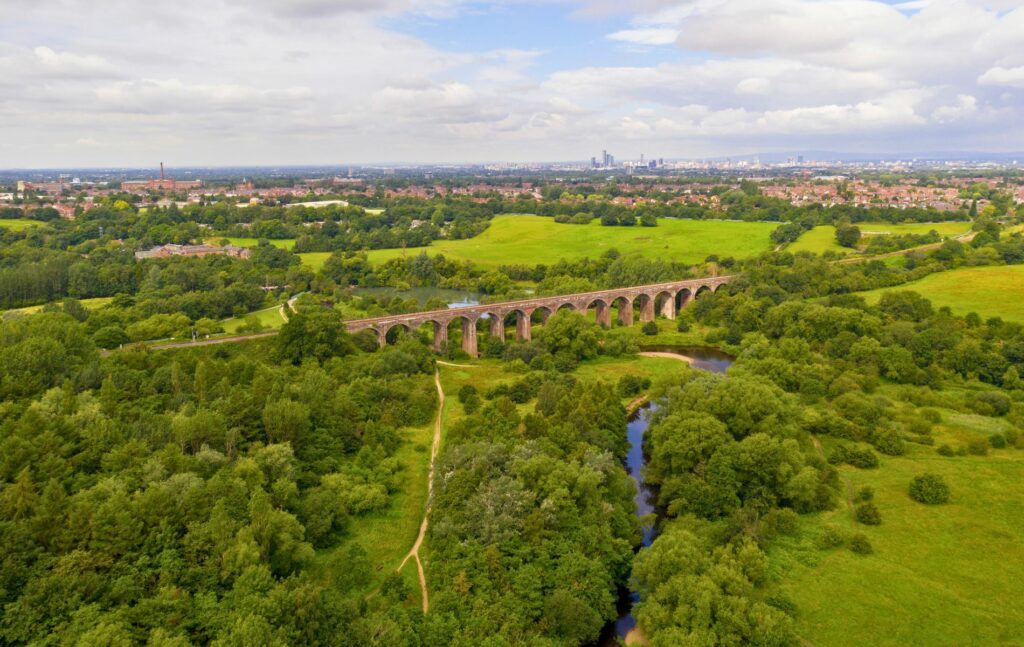
Though now part of Greater Manchester, Stockport’s heritage as a Cheshire town remains evident, offering a blend of suburban convenience and proximity to the countryside, making it a popular choice for families and professionals alike.
Stockport’s extensive retail and leisure facilities, along with its historical sites like Stockport Viaduct and Bramall Hall, add to the town’s appeal.
Stockport boasts an array of primary and secondary schools. The area is recognised for its focus on quality education with schools like Stockport Grammar School and Bramhall High School commended for their academic standards.
Located approximately 7.5 miles southeast of Manchester city centre, Stockport is an excellent choice for commuters. It is well-connected by major roadways, with easy access to the M60 motorway encircling Manchester, linking to the M56 for travel towards North Wales and the M6 for north-south travel across the UK.
Stockport railway station is a central hub on the West Coast Main Line, providing swift and regular services to Manchester Piccadilly, with a journey time of about 10 minutes. This station also offers direct services to other major cities, including London Euston.
Sale
This thriving town within the metropolitan borough of Trafford, Greater Manchester, combines the appeal of suburban living with the convenience of urban amenities. With an array of shops, cafes, and parks, such as the picturesque Sale Water Park, it is a favoured choice for families, professionals, and retirees alike.
Sale’s vibrant community life, characterised by events, local sports clubs, and cultural activities, contributes to its reputation as a friendly and dynamic place to live.
There are numerous primary schools dedicated to providing students with a solid educational start. Secondary education is similarly impressive, with establishments such as Sale Grammar School and Ashton on Mersey School providing comprehensive education to students aged 11-18 and achieving notable academic success.
Well-integrated into the Greater Manchester transport network, Sale is approximately 6 miles southwest of Manchester city centre. The town’s accessibility is further enhanced by its proximity to the M60 motorway. Served by the Metrolink tram service, there are reliable connections to Manchester and other key destinations across Greater Manchester.
Oxton
Oxton, a leafy Victorian suburb of Birkenhead on the Wirral Peninsula, was once part of Cheshire and today retains its village charm, known for its elegant period homes and strong sense of community. The area’s characterful streets are lined with independent cafes, shops, and local pubs, all centred around a conservation area that preserves its historic appeal.
Well-regarded for its schools, Oxton is popular with families, offering access to both primary education and secondary options such as Birkenhead School and St Anselm’s College.
Oxton’s location is ideal for those needing connections to Liverpool or Chester, with the Mersey tunnels and the M53 motorway nearby. Birkenhead Park and the coastline are easily reached, offering green space and leisure opportunities. Its blend of heritage, amenities, and access makes Oxton one of the most desirable parts of the Wirral.
More on The Wirral
There are many other desirable places to live on the Wirral, each offering its own appeal.
Often referred to as the Paradise Peninsula, the Wirral combines natural beauty with coastal access and excellent transport links.
Sought-after locations such as Parkgate, Heswall, Willaston, Caldy, and West Kirby continue to attract buyers looking for both tranquillity and convenience. For a more detailed look at these locations and more, see our guide to the best places to live on the Wirral.
Didsbury
Didsbury, a sought-after suburb to the south of Manchester, blends city access with a village-like atmosphere. Renowned for its tree-lined streets and a lively high street filled with independent shops, cafes, and restaurants, Didsbury offers a vibrant yet relaxed lifestyle.
The area is highly regarded for its schools, including Didsbury CE Primary and Parrs Wood High School, making it a popular choice for families. Didsbury also benefits from excellent access to green spaces, with Fletcher Moss Park and the River Mersey pathways close by.
Transport links are a key advantage, with the Metrolink providing direct tram services to Manchester city centre and beyond. The M60 motorway and Manchester Airport are within easy reach, supporting both commuters and travellers.
Best places to live in Cheshire
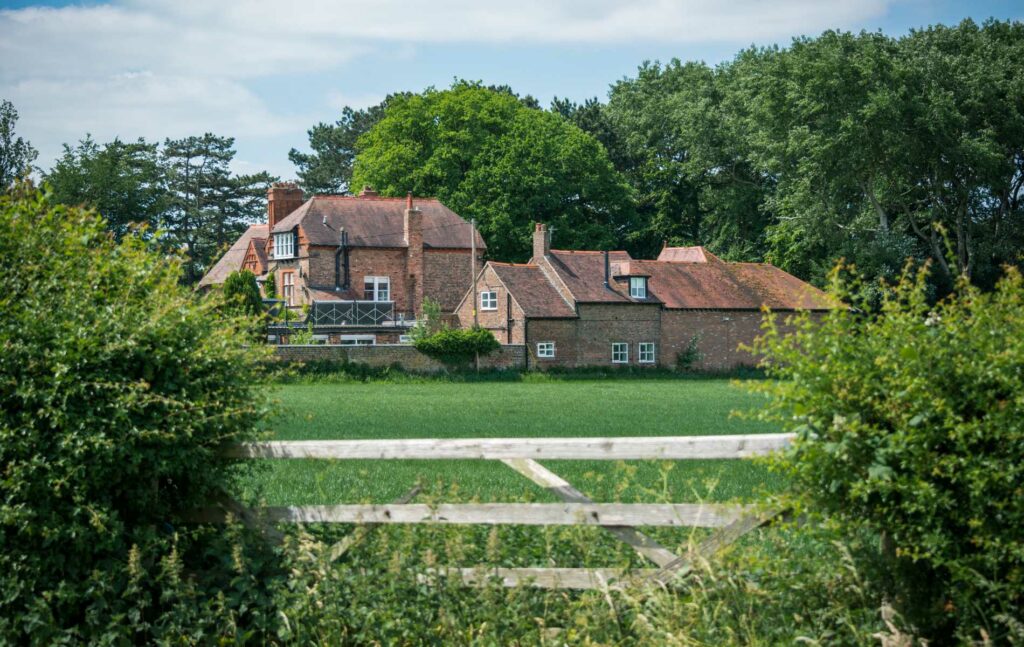
As property finders, we often assist clients in deciding the best places to live in Cheshire based on their requirements and preferences.
If you would like to talk with one of our expert buying agents, please do get in contact with Garrington.


